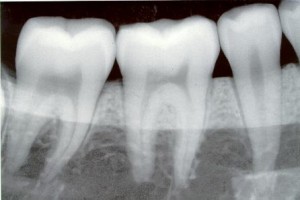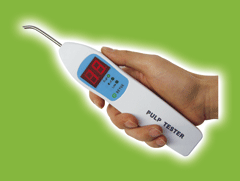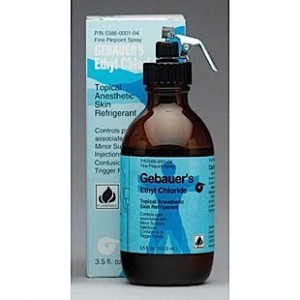Radiograph

Radiograph may show the number,
Course,
Shape,
Length,
and width of root canals, the presence of calcified material in the pulp chamber or root canal,
The resorption of dentin originating within the root canal (internal resorption) or from the root surface (external resorption)
Calcification or obliteration of the cavity,
Thickening of the periodontal ligament resorption of cementum,
And nature and extent of periapical and alveolar bone destruction.

Electric Pulp Testing:
The electric pulp test is more accurate than some of the tests used to determine pulp vitality. Although pulp vitality is dependent on intrapulpal blood circulation no practical, clinical test has been devised to test circulation.
The electric tester, when testing for pulp vitality, uses nerve stimulation instead. The objective is to stimulate a pulpal response by subjecting the tooth to an increasing degree of electric current.
A positive response is an indication of vitality and helps in determining the normality or abnormality of that pulp. No response to the electrical stimulus can be indication of pulp necrosis.
A simple technique for electrical pulp testing is as follows.
 1.Describe the test to the patient in a way that will reduce anxiety and will eliminate a biased response.
2. Isolate the area of teeth to be tested with cotton rolls and a saliva ejector, and air dry all the teeth.
3. Check the electric pulp tester for function, and determine that current is passing through the electrode.
4. Apply an electrolyte (toothpaste) on the tooth electrode, and place it against the dried enamel of the crown’s occlusobuccal or incisolabial surface. It is important to avoid contacting any restorations in the tooth or the adjacent gingival tissue with the electrolyte or the electrode; this would cause a false and misleading response.
5. Retract the patient’s cheek away from the tooth electrode with the free hand. This hand contact with the patient’s cheek completes the electrical circuit.
6. Turn the rheostat slowly to introduce minimal current into the tooth, and increase the current slowly. Ask the patient to indicate when sensation occurs by using such words as “tingling†or “warmthâ€. Record the result according to the numeric scale on the pulp tester.
7. Repeat the foregoing for each tooth to be tested.
A radiograph of all teeth being tested should be visible for reference during the test. Finally, one should not rely on the results of any one test or reaction to any one tooth without similarly testing and comparing the response to a control tooth.
At times, the results of the electric pulp test are misleading. For example, a false – positive response can occur when moist gangrenous pulp is present in a root canal. This situation is uncommon and requires the passage of maximum current through the tooth to elicit
a response. Another cause for confusion can occur in multirooted teeth in which the pulp is partially necrotic, with some nerve fibers still vital in one or more of the root canals.
A negative response can occur when calcification in the pulp tissue or dentin has been extensive. More current is needed to elicit a response in a tooth with increased reparative dentin and a diminishing pulp cavity, or in fibrotic pulp. Other factors that may affect responses are:
1. Teeth with extensive restorations and and a pulp-protecting base;
2. Recently traumatized teeth;
3. Recently erupted teeth with incomplete root formation;
4. Sedative medication taken by patient; and
5. Patients with an unusually high pain threshold.
Contraindications
1. Electric pulp testing is not done on teeth with full-coverage restorations because an electrical stimulus cannot pass undistorted through acrylic, ceramic, or metallic portions of a crown.
2. Patient with cardiac Pace Makers
Thermal Testing
Heat testing:
The heat test can be performed using different techniques that deliver different degree of temperature
Warm air
Hot water
Hot burnisher
Hot gutta percha
Hot compound
Any instrument which Delivers a controlled
Temperature to the tooth.
Cold Testing:
A stream of cold air
Ethyl chloride
Wrap a sliver of ice in wet gauze
Carbon dioxide (dry ice) snow (- 780C)
Thermal Testing:
A response to cold indicates a vital pulp, regardless of whether that pulp is normal or abnormal.
A heat test is not a test of pulp vitality. An abnormal
response to heat usually indicates the presence of a pulpal or periapical disorder requiring endodontic treatment
Anesthetic Testing:
This test is restricted to patients who are in pain at the time of the test, when the usual tests have failed to enable one to identify the tooth. The objective is to anesthetize a single tooth at a time until the pain disappears and is localized to a specific tooth.
The technique is done using either infiltration or the intraligament injection, if pain persists when the tooth has been fully anesthetized, anesthetize the next tooth mesial to it, and continue to do so until the pain disappears
